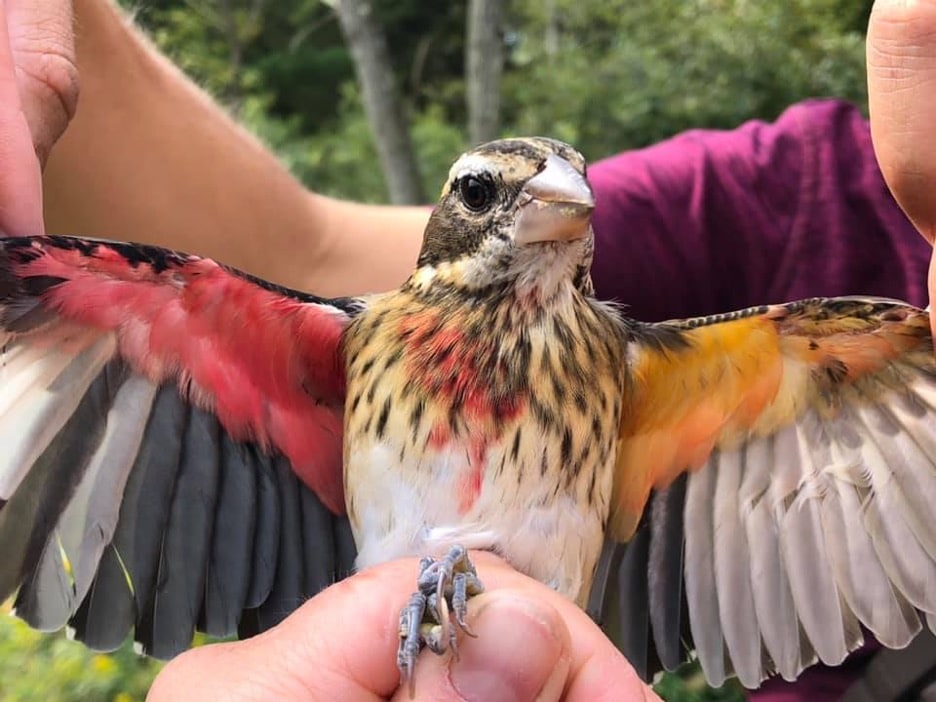
[Pittsburgh, Pennsylvania, September 28, 2020] — Researchers at Powdermill Nature Reserve, Carnegie Museum of Natural History’s environmental research center in Rector, PA, caught and banded a rare Rose-breasted Grosbeak gynandromorph on September 24, 2020. Gynandromorphs are genetically part male and part female, and in this case, that line runs roughly down the middle of the bird with male characteristics on the right and female on the left.
Rose-breasted Grosbeaks are sexually dimorphic, meaning that males and females have different plumage colorations. This bird has the male pink “wing pits,” breast spot, and black wing feathers on the right side and the female yellow wing pits and browner wing on the left side. In its 64 years of bird banding, Powdermill’s Avian Research Center has recorded fewer than 10 bilateral gynandromorphs.
“The entire banding team was very excited to see such a rarity up close, and are riding the high of this once-in-a-lifetime experience,” said Annie Lindsay, bird banding program manager at Powdermill. “One of them described it as ‘seeing a unicorn’ and another described the adrenaline rush of seeing something so remarkable. They all are incredibly grateful to be part of such a noteworthy and interesting banding record. Bilateral gynandromorphism, while very uncommon, is normal and provides an excellent example of a fascinating genetic process that few people ever encounter.”
A popular question in scientific circles is whether this bird has the capability to breed. Since usually only the left ovary is functional in birds, and the left side of this bird is the female side, this bird theoretically could produce young if it successfully mates with a male. The bird’s ability to reproduce could also depend on whether it sings like a male, which would potentially attract females and elicit a territorial response from other males.
An emerging national leader in avian research, the Powdermill Avian Research Center evaluates and disseminates best practices for novel technologies to track birds, contributes to management recommendations for at-risk species and populations, and studies the effects of habitat and species loss on migrating birds.
